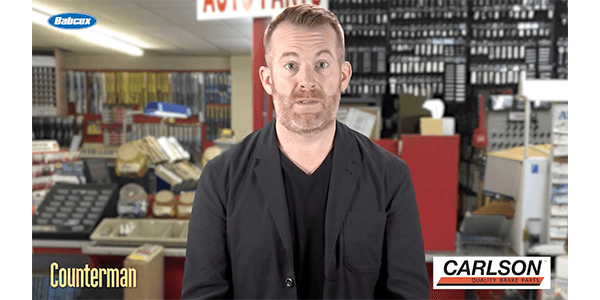Are your customers slapping their customers around? What do I mean by that? Counter Intelligence is NEXT!
Hi guys, it’s Mark Phillips. Oh, the pad slap. It’s a really dirty phrase. A phrase that says to just about anyone in the automotive aftermarket who respects what they do that someone is about to commit a crime! That they’re about to do something so lazy… Yeah, the pad slap. Know someone who does pad slaps? Well, don’t let it keep happening. Put an end to this pad slap madness today!
Let’s go over four common brake job mistakes made by rookie technicians (and pssst…. Maybe a few veteran ones, as well?) when replacing brake pads, rotors and calipers.
- Not cleaning the brake slides and hardware: Just slapping new pads and abutment clips where the old ones once resided never works. The caliper bracket slides need to be clean and free from rust. Make them free!!
- Not lubricating the guide pins. This is a shortcut most pad slappers make. Caliper guide pins on floating calipers should always be cleaned in solvent and new grease should be applied. The grease is under extreme heat and pressure, so always use caliper-specific grease. NEVER put a torn boot back on a car. Failure to service the guide pins is the leading source of uneven pad wear.
- Installing the brake pads backwards. What, what?? Let me read that again. Yes, it happens more often than you would think! Especially when the vehicle’s owner complains that the brakes are grinding after a “friend” changed the brake pads.
- Not properly torqueing the caliper bracket bolts. Not all caliper bracket bolts are the same. Torque ranges can vary from 30 to 110 ft./lbs. Also, some bracket bolts can be torque-to-yield or require liquid thread lockers. So, there you have it. Four common mistakes made when replacing brake pads, rotors and calipers. It should be done right. The first time. Or it’s just a slap in the — don’t do it. Face. I’m Mark Phillips. And thanks for watching.









